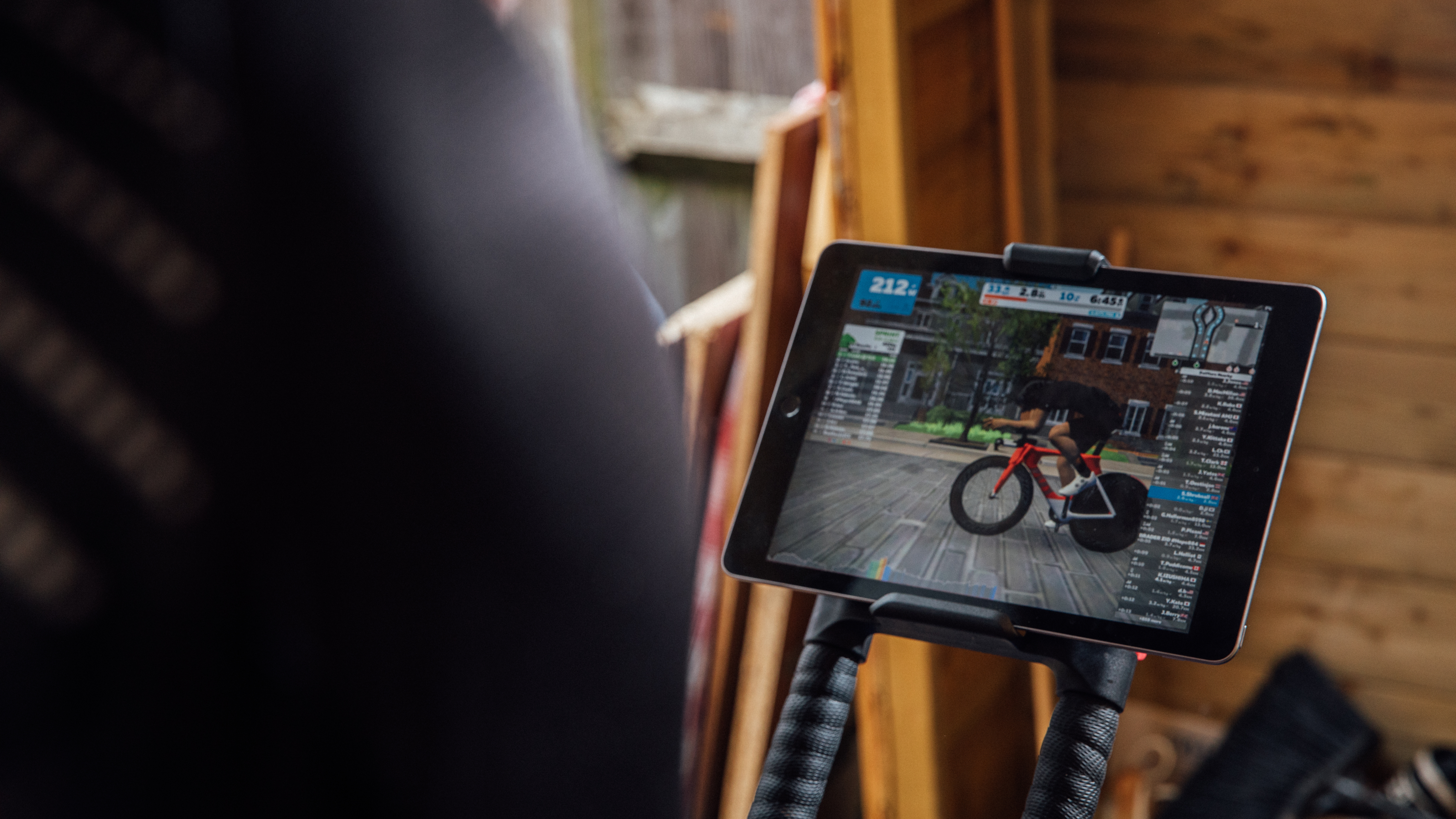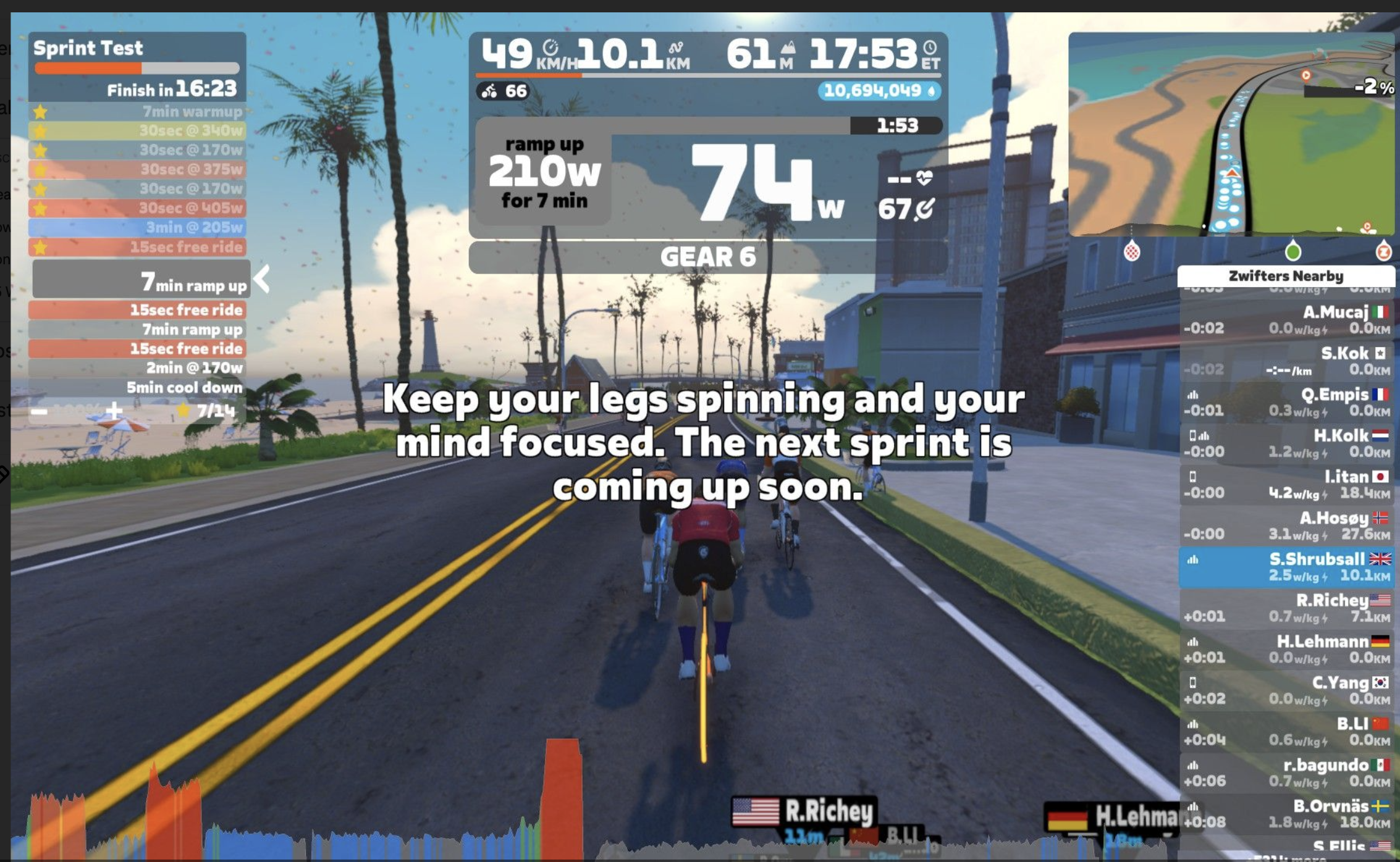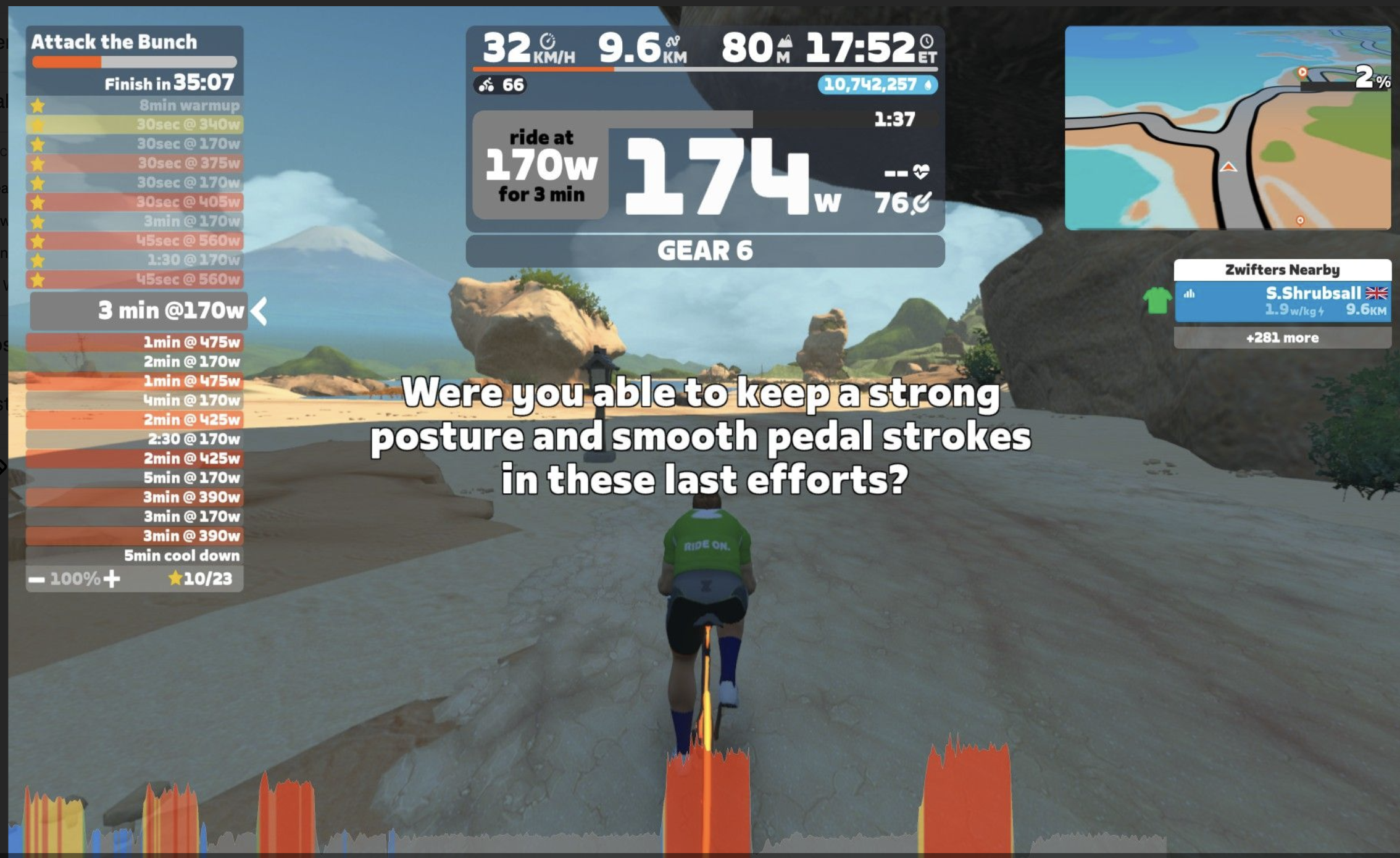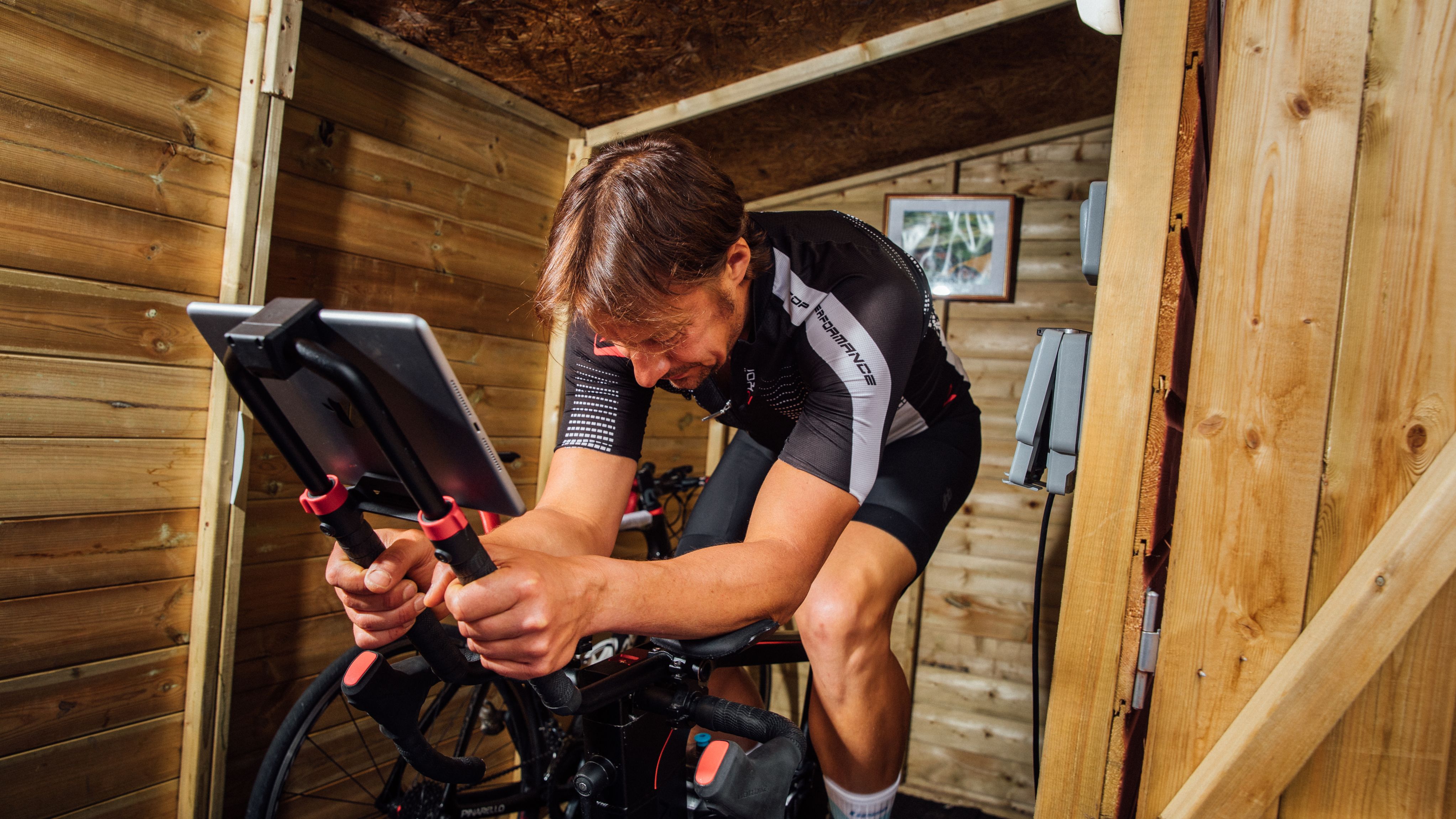
Having a coach, someone to answer to and analyse data if you’ve erred from your training plan or ridden a series of substandard workouts is an extremely valuable tool. If you’re a serious cyclist looking to optimise performance and win races accountability is key: strengths need to be identified and consolidated and likewise weaknesses pinpointed and improved upon. But we live in an economic era where energy bills often override the ability to fork out the monthly cost of a coach, particularly at this time of the year – which is arguably when you most need some form of guidance.
So when I saw that latest range of workouts on Zwift - The Baseline Camp - offers the app’s subscribers the chance to take a snapshot of their cycling fitness and have it scrutinised by an in-house algorithm, I jumped at the chance.
Riders are tasked with completing three workouts and three assessments before submitting their data and receiving a performance report. The workouts and tests are broken down into three categories: sprinting, attacking and endurance.
Personally, I’ve always considered myself a rider capable of sustaining a reasonable amount of power over longer distances, but lacking any real top-end watts. Was I right? How did I fair in each category? I’m glad you asked…
Sprinter's paradise

Training Stress Score (TSS) puts a number on the physical stress a session puts on the body. One hour of riding at Functional Threshold Power (FTP) - the power a rider is able to hold for that duration - would be rated '100'.
Workout 1: The Sprint Booster
One designed for the sprinters, the folk who lurk midpack before pulling the trigger with 100 metres to go, this anaerobic workout wakes up any dormant fast twitch muscles fibres and prepares you for the subsequent assessment. At 56 minutes in duration I accrued a training stress score (TSS) of 57 - so this is a fairly challenging hour on the bike. The workout comprises a comprehensive warm-up, opening the neurological pathways and sweat pores over the course of some 20 minutes. Then the work begins. Seven 20-second sprints have been specced with two minutes rest between each. If you haven’t opened the taps for a while this is a great way to remind your mind and body just how it feels and to gauge your current level of sprinting power.
Assessment 1: Sprinter’s test
The test itself takes place over 34 minutes most of which time is spent in Zone 1. However, a TSS of 47 suggests that I approached the 3x15 second sprints with the requisite amount of vigour. After warming up for 12 minutes you’re invited to unleash hell for the first time. I managed 1,050 watts for the first 15 second interval, there was more in the tank, I was certain. After a seven minute recovery period I engaged my Wattbike Atom’s biggest gear and went to war: 1,069 watts for 15 seconds. By now a fatigue had started to set in and I think I’d sprained my face, but nonetheless I attacked the third effort with no less gusto, or so I thought: 986 watts.
Self-assessment
I was a little disappointed with the outcome of this test. My peak power throughout all three efforts was 1,198 watts - I was hoping for more. At 90kg I believed I had the right build to put some really significant figures through the pedals, but alas, my type two muscle fibres evidently need nurturing.
Attacker's time to shine

Workout 2: Attack the Bunch
This is an eye-watering 52-minutes a wheel. Attack the Bunch is a session designed to work your VO2 max and anaerobic energy systems. As the workout title suggests, this is one for the rouleurs - those who can hold high power for sustained periods in order to create a breakaway or chase one down. It asks a lot of very difficult questions. After the usual warm-up, eight intervals are undertaken, and while the intensity of the efforts decrease as the session progresses, the duration increases. My first effort was 45 seconds at 560 watts, the 4th was 2 minutes at 425 watts, and the last was 3 minutes at 390 watts. Amassing 63 TSS this was an incredibly productive workout in and of itself, as well oiling the cogs for the pending test.
Assessment 2: Attacking test
Two minutes to shine - that’s all you get in this test that takes 32 minutes to complete. The Attacking Test is a measure of your one-minute power output and you’re given two chances to crank out the best watts your quads can muster. The first opportunity comes about 18 minutes into the assessment. I was primed and ready to rock but at the same time petrified and just as ready to scuttle back indoors and put the kettle on. If done correctly, one-minute efforts are hard, really hard - a good barometer effort here is, upon completing the interval, whether or not it tastes like you’re about to throw up a lung. A metallic tang that some say is borne from rupturing capillaries causes this, while others claim it’s red blood cells leaking into air sacs. Personally I have no idea what it is, but it’s a fantastic gauge of effort: taste blood, tried hard. My first one minute’s worth of power weighed in at 656 watts - an all time PB. While my second was a shade short at 653. The Attacking Test clocked-up 44 TSS – considerable bang for buck.
Self-assessment:
Obviously I was very pleased to have ridden to a new one-minute PB here, it almost made the metallic taste in my mouth worthwhile. Attack the Bunch is also a great standalone workout – one that I’ll be picking up from time to time whenever I pluck up the courage.
Duracell bunny time

Workout 3: Endurance Elevator
If racing against the clock is your forte you should get on with the following two sessions just fine. This is where the diesel engines will get the chance to chug out strong and steady watts for a protracted period. Endurance Elevator is broken down into three sets of work: a 10- minute interval at Functional Threshold Power (FTP) - the power you can hold for an hour - a nine-minute block divided into three (3 x just under FTP, 3 x FTP, 3 x just over FTP), and another 10-minute block at FTP but with varying cadences. Essentially, then, 3x10 at FTP. Not the toughest workout for those accustomed to longer durations at FTP pace, but accruing a TSS of 76 over an hour of riding it wasn’t a walk in the park either.
Assessment 3: Elevation evaluation
This assessment takes place on The Grade, a relatively new route in Watopia that features a consistent slope of 10% designed specifically to measure a rider’s FTP. Once you reach the summit of The Grade, which is only 2.2 miles in length, Zwift will estimate your FTP using the average power used to summit. It took me 13 minutes and one second to crest it. I averaged 380 watts to the top which garnered an FTP of 333 watts.
Self-assessment:
The last of the workouts and tests, the Endurance phase of Zwift’s Baseline Camp yielded results I was reasonably happy with. I was pleased to have managed a fairly substantial power output during my ascent of The Grade, although it robbed me of 12 hard- fought watts with my current FTP closer to 345.
Surprising results

Despite my belief that I shine over distance but struggle at short bursts, the good people at Zwift labelled me a ‘Jack of All Trades’. I had expected that my weight would cause the sprint expectations to be higher, but, my numbers obviously passed muster. It turns out, then, that I’ve been labouring under false pretenses all this time.
Of course, being a master of none, there’s still a great deal of work to be done before I reach anything resembling my peak. With Baseline Camp’s new workouts, and Zwift’s existing library of training sessions, there’s a whole lot of opportunity to finesse the foundations I’ve already laid.







